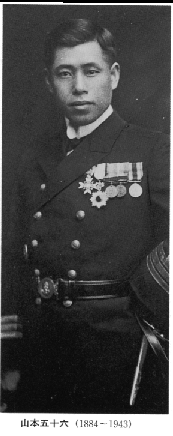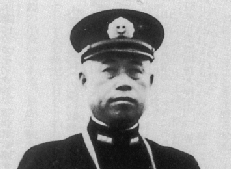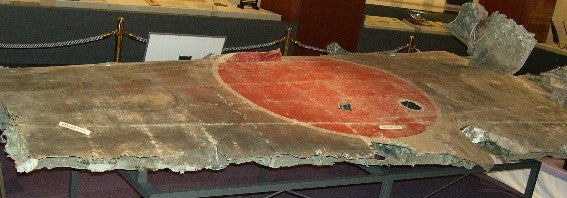Admiral Isoroku Yamamoto - Commander of the Japanese Allied Naval Forces


Admiral Isoroku Yamamoto of the Imperial Japanese Navy may have played a big influence on Kichimatsu Kishi’s decision to search for oil in the early 1920s. Yamamoto (formerly Takano) came from Nagaoka, Kishi’s hometown, where he actually lived just a few streets from Kishi. Yamamoto had already risen to a high position after succeeding Tatewaki Yamamoto, the karo or chief retainer of the daimyo family of Makino. Kishi’s connection with Yamomoto continued into the Russo-Japanese war where one of his fellow soldieres was Kihachi Takano, Isoroku Yamamoto’s brother. [2]
As a commander, Isoroku Yamamoto first came to the United States and stayed in Boston and Washington D.C. from June 1919 to July 1921. During this time, he refined his English and inspected the capabilities of the country. He noticed how important oil and airplanes would be in future naval battles and thus decided to make them the focal point of his studies. Accompanied by Michio Kaku, a councillor for the Japanese embassy, Yamamoto spent the first half of 1921 traveling around the U.S. observing oil-producing and oil-refining centers.
One of the locations that Yamamoto visted was Southeast Texas, where he decided to visit Kishi’s farm to talk about the newly found oil. Dr. Orii, a professor at the Department of History at the University of Pennsylvania, believes that Yamamoto pushed Kishi to search for more oil to provide a vital resource for Japan to complete their eight-battleship, eight-cruiser squadron.
Yamamoto again visited the Kishi farm oil field in February or March 1924 accompanied by Vice Admiral Kenji Ide and Michio Kaku, his long-time travelling companion and the head of the recently opened New Orleans Japanese Consulate. Then, Yamamoto finished his tour by inspecting the military infrastructure of Europe and the U.S. . Investigating the oil fields further cemented in his head the idea that the coming era would be controlled by oil and aircraft [Morning Edition Niigata Nippou, March 28, 2003]. Following the inspection, Yamamoto was quite happy to see the success of the largescale oil-searching efforts and oil production conducted under Kichimatsu Kishi’s command. Seeing Kishi’s success in Texas, Yamamoto advised the Nippon Petroleum Company to join the search for oil. Unfortunately, his request fell on deaf ears.

The insert is the signature of the visitors. This was found by Kazuhiko Orii in the Kichimatsu Kishi's guest book, now owned by Henry Hirasaki, Kishi's grandson. [Yamamoto Memorial Museum, Nagaoka]
Yamamoto stayed in his postion during WW2 but also opposed the tripartite agreement while he was a Naval Attache. He died as the Commander of the Japanese Allied Naval Forces during WW II when his plane was shot down.

The U.S. had broken the Japanese code and knew which plane carried Yamamoto. The wreckage was recovered from New Guinea and moved to the Yamamoto Memorial Museum in 1997.
References
1. Walls, Thomas K. (1987) The Japanese Texans, San Antonio: University of Texas, Institute of Texan Cultures at San Antonio, 1996.
2. Orii, K. (1983) Kichimatsu Kishi’s Japanese Colony at Terry, Texas, Department of History, University of Pennsylvania.
3. Wingate, G. (1974) “The Kishi Colony,” in The Folklore of Texan Cultures, Abernethy, F. E., ed. The Encino Press, Austin.
Taro Kishi (1903 - 1993)
